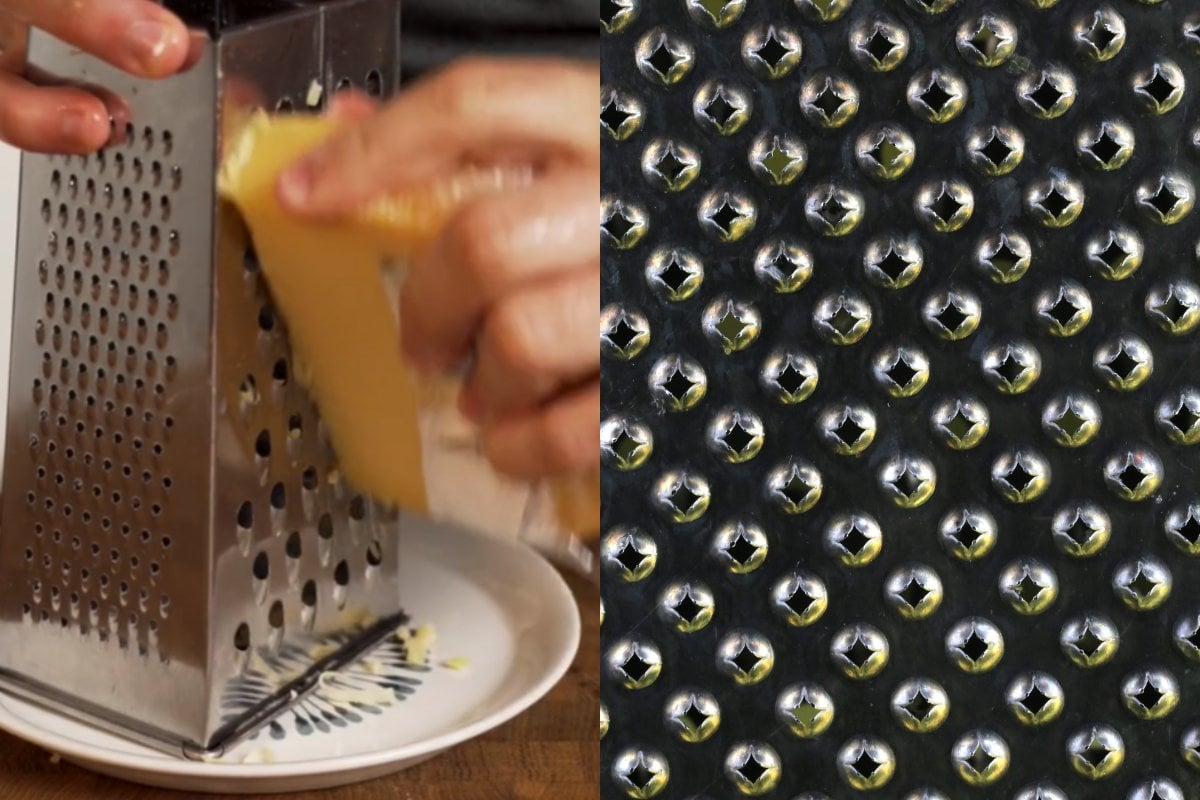
A cheese grater is something we use nearly every day, but have you ever really stopped to consider what the other three sides are for when you’re enthusiastically grating piles of cheese onto your pasta?
Well, I do. There it sits in my kitchen drawer, a multi-sided metal contraption that's supposed to make my culinary life easier. But does it? I mean, I use it almost daily to shower my food with a snow-like dusting of parmesan, but I can't shake the feeling that I'm only scratching the surface of its potential.
Watch: Don't use the microwave when reheating these 5 foods. Post continues below.
The cheese grater, with its various sides sporting different patterns of holes and protrusions, is like a culinary Rubik's cube. I find myself staring at it, particularly that spiky side, wondering what culinary magic I'm missing out on.
Is it for grating cheese? Surely not, it looks more like a medieval torture device than something you'd use on a block of gouda. And don't even get me started on the other sides. The slicing side? The thin grater? The big grater? It's a kitchen tool identity crisis, and I'm caught in the middle of it.
I can't be the only one who feels this way, right?
It's time to demystify this kitchen staple and unlock its full potential. So, let's dive into the world of cheese graters and discover what each side is really for. Who knows? We might just revolutionise our cooking game in the process.




























































































